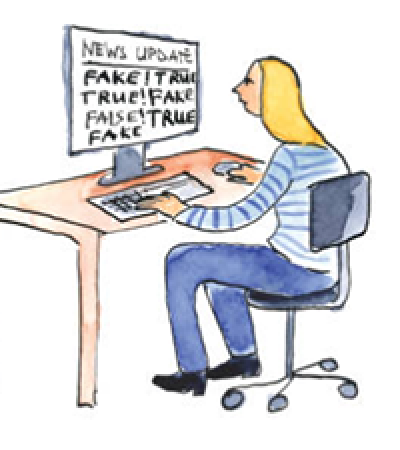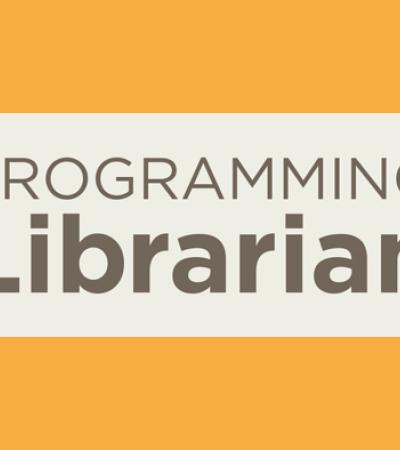National History Day (NHD) projects have been part of our collaborative library programming for years. They are a great way for students to learn the research process in a deep and meaningful manner, meeting many National School Library Standards. It's also a great way for students to practice the various literacies: news, information, media and digital.
Topic selection
Every year, National History Day presents a theme as the umbrella for students to base their research around. The theme is intentionally broad to provide students with choice in selecting a historical topic. The 2019-2020 theme was Breaking Barriers.
Students enjoy the process of topic selection. As a school librarian, you can collaborate with the teacher to plan and execute lessons on topic selection. We like to share the video "The Butterfly Effect" by Andy Andrews to think about brainstorming a topic.
In the library, we kick off the book selection process by laying out a plethora of books for students to browse. The books are a mix of histories and biographies about events and people that could easily fit in the NHD theme.
We also mix in books that don't readily fit the theme, such as a book about crows (yes, the bird). This helps our students to make connections: a book about crows can lead to learning about the history of pesticides, animal safety, Henry Bergh, environmental protection, Jane Goodall and deforestation. Yes, students make the leap from a book about crows to researching a historical event. It gets them thinking outside of the box.
Public librarians: When National History Day starts to roll around, showcasing displays of books, creating pathfinders,and assisting students with research make a great way to collaborate with your school community. We know that we rely on our public library each year to assist our students and teachers!
Narrowing and developing your research question
Once a student settles on a topic, we meet with the student to ensure that it fits in the year's theme and that the topic is something that has historical impact.
All great research begins with a great research question! After topic selection, students generate a research question(s) to help guide their research. This leads to students then generating their thesis statement. Here are some questions a student may ask to begin a historical exploration of Henry Bergh:
- Who is Henry Bergh?
- How did Henry Bergh break barriers?
- What is Henry Bergh’s impact on history?
Selection and evaluation
In this step, students begin their preliminary research and then really dig into the research process. At this stage in the inquiry process, we can teach students how to practice using keywords, advanced searching, using databases, and evaluating resources.
Students need to consider so many important questions in this process:
- Is there enough information?
- Can their research question be answered?
- Do they need to rethink their research question?
- What are the avenues for more information?
- Is it a primary or secondary source?
- What visuals will best represent my topic?
As students practice their selection and evaluation skills, we teach them to evaluate the authority and the bias of the author. This is a good time to include a conversation on historical perspective. Teaching Tolerance is a great resource, and the lesson, What Counts as History? is a good beginning to the conversation. This lesson will get students thinking about what is included in the history books and what is missing.
Public librarians: Your expertise in research and evaluation come into play heavily during the selection and evaluation phase! Our public library comes to each middle school during NHD and helps students and teachers select and evaluate resources available via the public library.
Providing attribution
Students practice finding quality information to meet their information needs, and they must provide attribution for the resources they use. National History Day requires an annotated bibliography as part of the project. Therefore, it is extremely important that the school librarian work with the classroom educator to teach not only the citation process but also what an annotation consists of as students find resources.
Thesis
Now it is time for students to answer their research question(s) and develop a thesis statement. Several years ago we created a thesis video that students can refer back to when working on their thesis statement.
Here's an example of a student thesis:
In New York City in 1866 Henry Bergh founded the ASCPA and took a stand for the rights of animals at a time when no one else would. Many people did not like Bergh for giving animals rights and he became known as "The Great Meddler.'” The immediate effects were that people began to criticize him for going against what was the norm but it also caused people to think about the ways they had been treating their animals. Even after 150 years animal rights are being recognized and the ASPCA is going strong.
Synthesis and reporting findings
There are multiple ways in which NHD allows students to share their findings. These include: writing a historical research paper, creating a backboard display, or creating a website, documentary or theatrical performance. We encourage students to choose the manner that appeals to them and works for their topic.
Planning ahead
We love National History Day research. Once the new theme is announced we start thinking about titles and resources that are already in our collection and additional resources to meet the new school year’s research needs.
The theme for 2020-2021 is Communication in History: The Key to Understanding. This summer, consider the resources you already have in your library to support the topic, curate a list of resources and begin creating research guides for your students.
As we plan for the fall, consider our remote learning experiences. What measures and supports will we need to have in place if we were to take an inquiry project such as National History Day and assign it remotely? This is the time to start gathering ideas, collaborate with your classroom teachers and fellow librarians, create those research guides and how-to videos and consider the best accessible platform in which to share the resources.
We must be prepared to answer these questions as we move into the fall:
- If we are not able to physically pull library books for students to investigate for brainstorming and topic selection, how might this look?
- How do we take our programming virtually and engage?
- What are you doing to prepare for inquiry learning in a remote or hybrid environment for fall?
Please share your ideas and comments below. As librarians, we know that we are better together and serve as amazing resources to each other.



